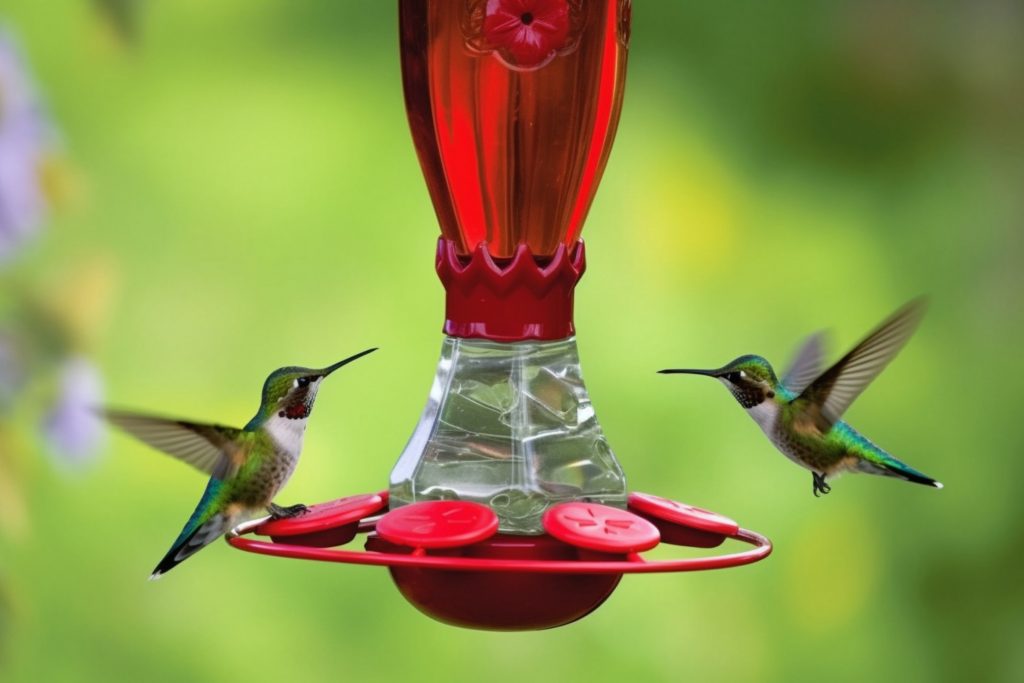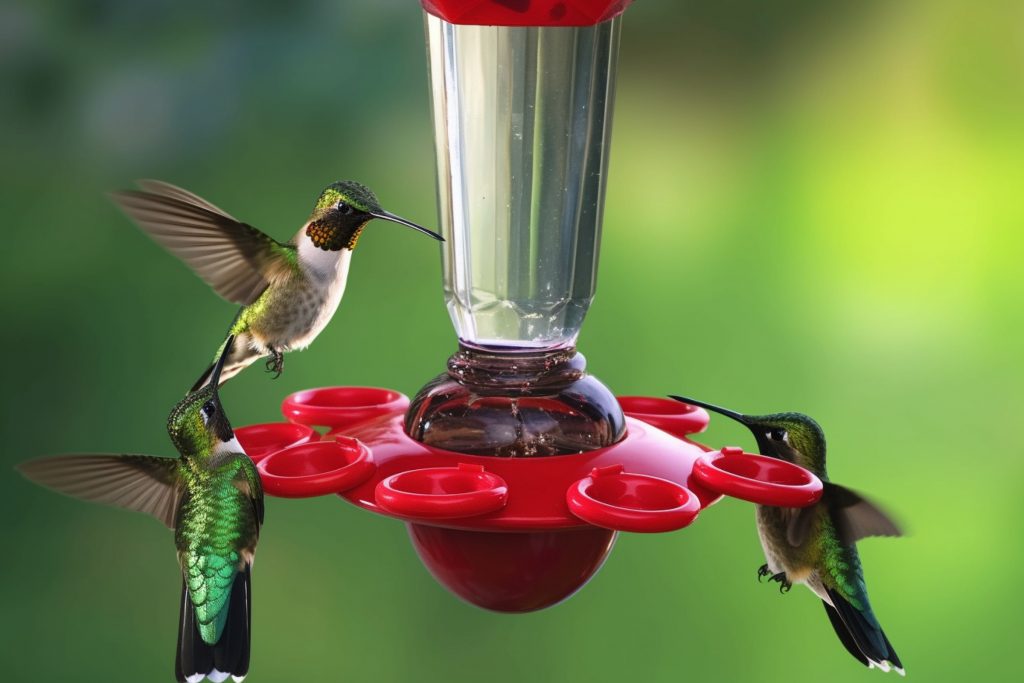The type of food to fill your hummingbird feeder with is an important decision for any bird lover.
Hummingbirds, among all bird species, require the most specific diet to stay healthy and happy. The food you provide your hummingbirds can directly affect their lifespan and productivity.
Finding the right food for your hummingbirds doesn’t have to be a complicated task if you understand what type of food they need, in what form, and how often to fill the feeder.
In this article, we will explore the various types of food and which ones are best for hummingbirds.
What Should You Put In Hummingbird Feeders?
To fill a hummingbird feeder, you can use a solution of 4:1 water-to-sugar ratio (four parts water to one part white granulated sugar). This replicates the natural nectar that hummingbirds find in flowers, providing the necessary energy for their high metabolism.
So, to prepare this, you will need to boil the water and dissolve the sugar in it, then let the mixture cool to room temperature before filling the feeder. It’s important to use white granulated sugar and not raw, brown, or artificial sweeteners, as these can be harmful to hummingbirds.
You should also avoid adding red food colouring to the mixture, as it is unnecessary and can harm the birds.
In addition to sugar water, hummingbirds also need a source of protein, which they get from insects. If you live in an area where there are not many natural sources of insects for hummingbirds, you may want to consider setting up a hummingbird feeder with live insects, such as mealworms, to supplement their diet.
Are There Any Other Recipes For Hummingbird Feeders?
The most common hummingbird feeder recipe is the 4:1 water-to-sugar ratio. However, there’s also a slightly richer mix of a 3:1 water-to-sugar ratio. This is sometimes used by some bird watchers during spring and fall migrations when hummingbirds need a bit more fuel for their journey.
But be cautious with this mix as a higher sugar content can also lead to faster fermentation and mould growth, especially in warmer weather, so more frequent cleaning and refreshing would be necessary.
Remember that these simple sugar water mixes are the safest and most recommended option for feeding hummingbirds. As mentioned earlier, never use honey, artificial sweeteners, or red dye, as these can be harmful to the birds.

How Often Should You Fill Your Hummingbird Feeder?
Determining the right time to refill your hummingbird feeder can be influenced by various factors. These can range from your geographical location, the level of bird activity in your area, to the specific time of the year.
In the midst of the bustling peak season, usually the summer months, hummingbird activity is at its highest. You may observe these fascinating creatures fluttering around your feeder more often due to the plentiful availability of food. During this period, it’s advisable to replenish your feeder every two to three days to ensure a constant supply of nectar for these energetic visitors.
However, as the cooler months approach, hummingbird activity begins to dwindle. Fewer birds may visit your yard during these times, hence reducing the frequency at which the feeder depletes. You may find that refilling the feeder once a week, or even less frequently, will suffice. This, of course, is largely dependent on the number of hummingbirds that visit your yard during these cooler periods.

Are There Any Special Considerations When Filling My Hummingbird Feeder?
There are a few special considerations to keep in mind when filling your hummingbird feeder:
- Use a solution of four parts water to one part white granulated sugar. Do not use raw, brown, or artificial sweeteners, as they can be harmful to the birds.
- Make sure to clean the feeder regularly, at least once a week, to prevent the growth of mould or bacteria. Empty out any remaining solution and rinse the feeder with hot water, or use a mild soap or vinegar solution to thoroughly clean it.
- Avoid adding red food colouring to the sugar water, as it is not necessary and can be harmful to the birds.
- Consider the weather when filling your feeder. In hot weather, it’s important to refill the feeder more frequently to prevent the solution from spoiling. In cold weather, the solution may need to be changed less frequently, as the lower temperatures slow down the fermentation process.
- If you live in an area where there are not many natural sources of insects for hummingbirds, you may want to consider setting up a hummingbird feeder with live insects, such as mealworms, to supplement their diet.
These are some of the special considerations to keep in mind when filling your hummingbird feeder.
Conclusion
Understanding what type of food and how often you need to fill your hummingbird feeder can help ensure that the hummingbirds that come feeding from your feeder get all of their necessary nutrition while avoiding potential health risks associated with improper feeding habits.
With some careful attention paid to these details each time you fill your hummingbird feeders, you can create a safe and healthy environment for them to thrive!
Related Posts:
Best Hummingbird Feeders.
Hummingbird Feeders Comprehensive Guide.
How To Stop A Hummingbird Feeder From Leaking.
Image Gallery – What To Fill Hummingbird Feeder With



References:
- About Hummingbird (Wikipedia).
- About Nectar (Wikipedia)
- Greenewalt, C. H. (1960). Hummingbirds. New York: Doubleday. Google Scholar.
